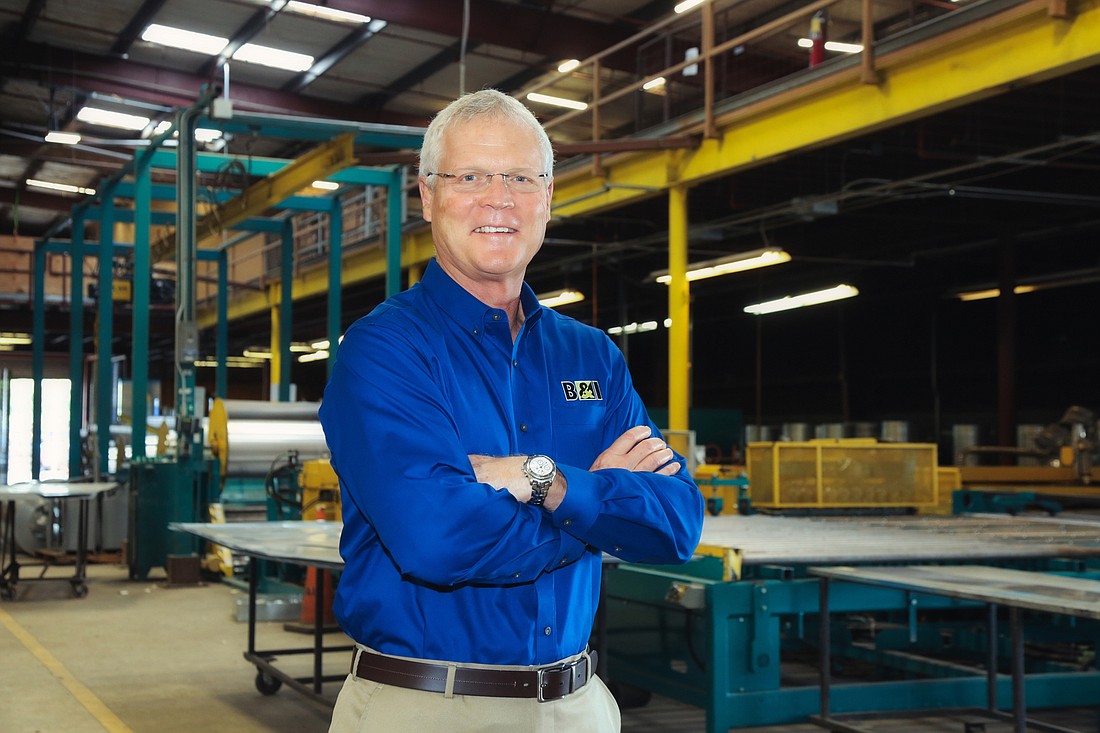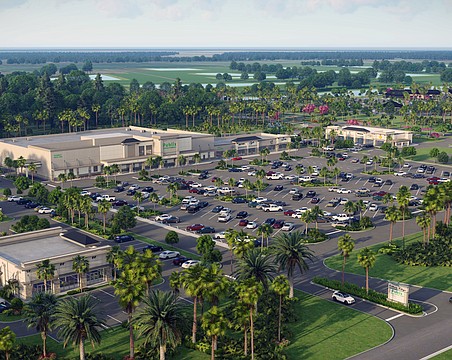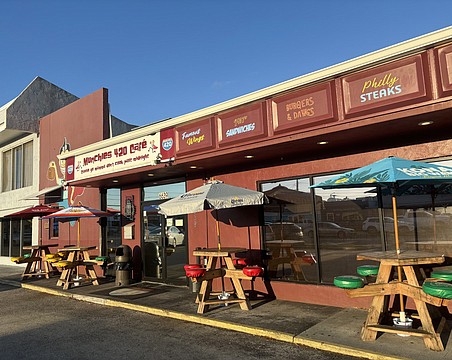Gary Griffin has seen a lot of changes in his almost 26 years as president of B & I Contractors. For one, the Fort Myers–based mechanical contractor has added four Florida satellite offices to better serve its ever-growing sphere of work in the HVAC, electrical and plumbing sectors.
Advancements in technology have also created totally new ways of doing things that increase both productivity and quality. Instead of draftsmen working with pencil and paper, the company now has more than 30 graduate engineers using high-tech tools like computer-aided design and building information modeling to create 3D models of projects. That information is then sent to its automated fabrication facility, where the company can turn out prefabricated piping, ducts and electrical components for use in those projects.
Griffin estimates B & I has invested some $3 million in technological and facility upgrades in the past few years. The investment has led to some pretty dramatic growth: Revenue has increased 138.33% over the past five years, from $58.74 million in 2016 to $140 million in 2020. And that’s up more than 1,000% from 1995, when Griffin was named president of the firm, which that year did $12 million in revenue. It has more than 800 employees, making it one of the largest contracting firms in Southwest Florida.
“We could not have hired enough tradespeople to do $140 million in revenue with the methods we used in 1995,” says Griffin, 58. “This fabrication and technology investment has not only allowed us to be a high-quality contractor, but it’s also allowed us to grow and do more work. … And we’re probably set for the next five to eight years. I feel like what we’ve invested in our facilities now will support continued growth in the future.”
But some things haven’t changed at the company during his tenure. Corporate culture remains important, as do efforts to recruit and retain quality employees — a constant challenge. The company has also been employee-owned for 34 years, and that’s contributed significantly to its growth. “People want to be here,” Griffin says. “And they see the success of the company as something that’s integral to their success.”
Lots of potential
B & I was founded in 1960 by Gordon and Ira Harbuck. Gordon had worked on the Naples High School project as an employee of another mechanical contractor, and he decided to stay in the area and start his own business. He was nicknamed Buck, so the couple used their first initials to name the firm.
In the late 1980s he was ready to retire. He thought about selling B & I to another contractor but decided instead to opt for an employee stock ownership plan. That approach has paid off for the company. “We have more long-term employees than I think most mechanical contractors and most of our local competitors can boast,” Griffin says.
A Southwest Florida native, Griffin first came to B & I as an intern while in college at University of Florida. He got hired on full time after graduating in 1986 and began rising the ranks. He considers both Harbuck and his successor, Hugh Clark, to be influential mentors. They identified his potential and helped groom him to feel confident enough to take the reins of the company at age 32 in 1995.
“They made sure I got a lot of training and was well prepared to take over,” he says. “I probably wasn’t ‘ready,’ but I was more ready than I would have been had it not been for them taking a personal interest in getting me ready.”
The company was on strong financial footing when Griffin took the helm, another factor he points to when it comes to B & I’s growth. He says the company’s bonding capacity — its ability to get the bonds necessary for most public and some private projects to protect all parties from risk — is about “two to three times” more than it would ever need. “We have more bonding capacity than we know what to do with,” he says.
The company’s strong finances also make it easier to undertake endeavors like its recent investment in technology and facilities. “We can usually fund things from our own profitability rather than going out and having to borrow money,” he says. “It’s a comfortable feeling that has allowed us to make decisions that are really five-year decisions and 10-year decisions, versus how are we going to get through the end of this year.”
Dependable choice
In addition to its Fort Myers headquarters, B & I has satellite offices in Sarasota, Tampa and Tamarac, plus a second Fort Myers location. B & I offers a range of pre-construction and construction mechanical contracting services, as well as maintenance and service of existing mechanical systems. It focuses on commercial and institutional construction work in such sectors as education, health care and hospitality, and its portfolio includes mechanical contracting work for clients including Lee Health, NCH Healthcare System, Arthrex and Raymond James Stadium, along with many local counties and school systems.
“I have worked with B & I for at least 35 years,” says Tim Hensey, the area manager of Gilbane Building Company. “They’re consistently competitive. They’re very professional, and they meet our schedules and do good quality work. I have probably used them more than most other mechanical contractors combined over the years. They’ve just never let me down.”
Hensey points to the company’s investment in its employees and its leadership team as two reasons why it gets his repeat business. “Because of my long-term relationship with the company, when I call Gary or Jason [Grabowski, the executive vice president and COO], they either take my call or get back with me in a timely way. It’s not always roses; there have been a number of times I’ve called them and said, ‘I don’t think you have enough people on this job’ or ‘I need you to get this done sooner.’ They’re not perfect, but they’re responsive to our needs, and I think that goes to the leadership at the top.”
Like everyone else, B & I had to make some changes to the way it worked in 2020. But the amount of work on the company’s plate didn’t diminish. Construction-related work remained steady, and although service-related work did take a hit in the first half of 2020, things have since been picking back up there.
Not surprisingly, many customers are reaching out to B & I about projects to improve indoor air quality. The company has been turning to technologies including high-efficiency filtration, UV lights and bipolar ionization to address the issue that has been brought to the forefront during the COVID-19 pandemic.
Continuous improvement, within the company and industry, are key drivers for the company. Griffin is on on the boards of industry-related groups, such as Associated Builders and Contractors and Florida Building Commission-Mechanical TAC. B & I is also a member of the Unified Group, a national association of independent mechanical contractors where members share best practices and resources. The Unified Group recently named B & I its 2020 Making the Difference Award winner — recognizing the company for the work it does both within the group and beyond to help support and grow the industry.
“They have a very strong team of people in place and are all thoughtful and kind people,” says Janet Kelleher, the executive director of the Unified Group. "They care about their customers, but they also care about their people. And for me they’re super involved in the Unified Group. You only get what you give out of something like this, and I think they do their fair share of both.”
Finding future talent
Griffin’s biggest ongoing concern is finding and retaining employees — an industrywide issue.
According to the U.S. Bureau of Labor Statistics, employment in fields like heating, air-conditioning, refrigeration, plumbing and welding is expected to grow between 3% and 4% from 2019 to 2029, driven by a healthy construction sector. “It’s the biggest struggle across the whole group, finding good technicians and finding people who want to come into the industry,” Kelleher says.
B & I has forged relationships with schools including Florida Gulf Coast University, Donna J. Beasley Tri-County Apprenticeship Academy and South Fort Myers High School to help inspire and train the next generation of mechanical contracting employees. Before the pandemic, the company frequently hosted tours for students to show them what careers in the industry truly look like. “We show them that construction careers can be turning a wrench and hand welding pipes, or it can be running a computer and creating 3D CAD models,” Griffin says.
‘We can usually fund things from our own profitability rather than going out and having to borrow money.’ Gary Griffin, B & I Contractors
That inside insight goes a long way with students. “It adds great value to have someone else echo exactly what I’m telling them,” says Tim Greenwell, the director of the Welding Academy at South Fort Myers High School. “B & I confirms for students what I tell them. And when they can hear it from someone else besides me, it resonates.”
The company has hired students out of these local programs, and that is part of Griffin’s strategy of “recruit, recruit, recruit. We always look for talent and never hesitate to hire if the quality is there,” he says.
Being an employee-owned company gives B & I a leg up on its competitors when it comes to recruiting, Griffin believes. The company also offers a solid benefits package that appeals to younger employees who aren’t thinking about retirement as much yet. Training is another key part of B & I’s retention efforts. That could mean adding to an employee’s existing skill set or retraining a field technician to allow them to transition to a role at the company’s fabrication facility.
“I think our people who have been here for a while are not out looking for a job,” Griffin says. “They’re very happy here. … I worry more about [staffing] than I do things like materials prices. Those seem to be trends that go up and down, whereas quality labor is always the most important thing we need to be successful.”






